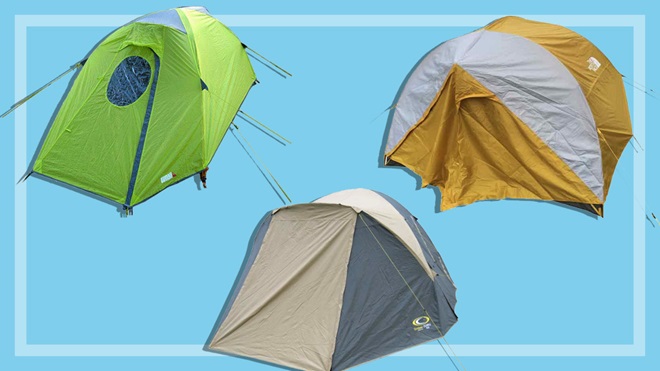We no longer test tents. For more CHOICE recommendations, check out our top 50 product reviews.
Camping can be a fun getaway for anyone who loves the great outdoors – or who loves to save a buck on holiday accommodation. CHOICE regularly tests tents for water resistance, ease of assembly and comfort, so we can tell you exactly what to look for when you're shopping for a tent of your own.
On this page:
- What should I look for in a tent?
- Do I need a solo, two-person or family-sized tent?
- What about the weather - will it come inside the tent?
- What else do I need to consider when purchasing a tent?
What should I look for in a tent?
Comfort and an easy set-up are key when it comes to choosing the right tent. You don't want your night under the stars to turn into a cramped and miserable washout, or a divorce-inducing argument over which peg goes where.
Your tent should:
- be easy to pitch
- keep you dry
- have enough space for you, your camping buddies and your gear.
Do I need a solo, two-person or family-sized tent?
Tent capacity is based on the number of sleeping bags that can fill the floor space and doesn't take into account storage for luggage and other camping gear.
Unless you want to get really up close and personal with your camping companions, a good rule of thumb is to over-accommodate by at least one person. Four-person tents are generally great for two people – giving you enough space to move around and store your things, without ending up on top of each other. Unless you're aiming for that, in which case underestimate!
Tip: It's a good idea to see the tent set up in the shop before you buy.
What about the weather - will it come inside the tent?
Just looking at the tent won't tell you whether or not it's going to leak in the rain, but many tents specify what weather they're best for. Good ventilation is important for Australian weather, but the trade-off for a cool breeze on a hot night will be reduced water resistance in a downpour.
Check out the rain test scores in our reviews – anything less than 70% means the tent leaked water to an uncomfortable degree. And no one wants to wake up in a soggy sleeping bag.
What else do I need to consider when purchasing a tent?
Style
If you're after a larger tent, such as a 4-person or 6-person tent, your two main choices are a cabin-style or a dome. Dome tents are lighter and easier to put up and take down. Cabin-style tents are better suited to long holidays camping in one spot. If you need a smaller tent, your main choice is the dome shape.
If you choose to go with a dome tent, your choice is between a crossover (the frame poles cross over each other), geodesic style (crossover poles and two hoop poles at the sides) or pure dome (two hoops only). Geodesics generally have more space and greater stability but are heavier and a little slower to put up. They're also more expensive.
Height
If you're going to spend a fair amount of time in the tent, make sure it's high enough to stand in. Also make sure the walls don't slope in too much, limiting the amount of space you can use.
Instructions
Look for a tent with assembly instructions that are attached to the carry bag. This can be very useful if you haven't put the tent up in a long time.
Peg down
Tents that peg down are easier to secure than those that clip on or attach by Velcro. It means you don't have to line the tent up so precisely. Peg-down points should be heavy-duty and securely attached to the tent.
Pegs
Pegs should be a good length (at least 20cm) and thickness (around 5mm) and preferably made of steel. Plastic ones with a flatter profile are good in very sandy soil but tend to break more easily.
Ropes
Ropes should be a good length and thickness, and easily adjustable.
Carry bag
A large, strong carry bag is essential, but note that what appears to be an adequate size in the shop may be too small when you try to fit the tent back in it. It never rolls up as small as when you first got it!
Windows
Good ventilation is essential and netted windows should allow for a cross-breeze in hot climates. Zipped windows are best, but there should be good wide flaps over the zip to keep rain from entering the tent.
Door
- The door should be large enough to let you come and go easily. Some tents allow you to zip the fly screen and the door either together or separately.
- Doors at the front and back of the tent are great for keeping the weather out if it's coming from one direction, while still allowing for ventilation.
- Some doors can be turned into an awning to provide shade and shelter while outside the tent.
Internal pockets
Pockets in the inner walls of the tent are useful for storing small items like a torch or gloves.
Power cord access
If you'll be using electricity (say, for a light), cord access through a small zip in the inner tent wall is useful.
Hook
If you're using a portable lantern, it's useful to have a ceiling hook to hang it from.
Sunroof
Sunroofs in tents are usually clear plastic panels that let the light in, but can be zipped up with an opaque flap when night falls. Look for a good seal around the sunroof to avoid leakage.
Stock images: Getty, unless otherwise stated.




